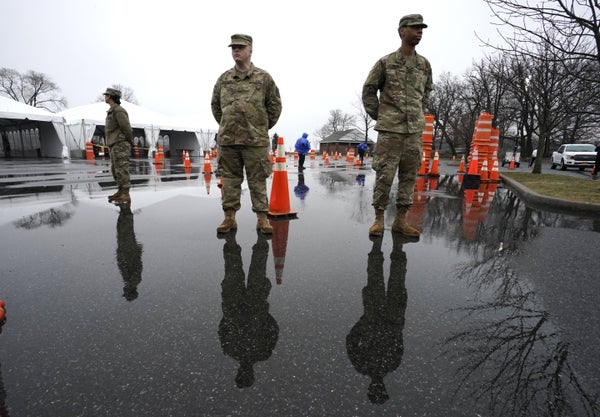This article was published in Scientific American’s former blog network and reflects the views of the author, not necessarily those of Scientific American
A month ago the small city where I live was no big deal. Sure, New Rochelle was once famous as the setting of the beloved 1960s sitcom The Dick Van Dyke Show; the split-level home of Rob and Laura Petrie was in this quintessential New York suburb. But few people under age 60 had heard of the place.
Things changed on March 10.
Suddenly our fair city (population: 79,946 in 2017—the seventh largest in the state) was at the top of the news. That’s because we have the dubious distinction of being home to the largest coronavirus outbreak in New York State and one of the most concentrated in the country. Of 173 cases in New York as of that date, 108 were in New Rochelle, according to our governor, Andrew Cuomo. We had three times as many cases as New York City, though we are less than one hundredth the size.
On supporting science journalism
If you're enjoying this article, consider supporting our award-winning journalism by subscribing. By purchasing a subscription you are helping to ensure the future of impactful stories about the discoveries and ideas shaping our world today.
Cuomo announced that day that he was creating a “containment zone” with a one-mile radius centered on the Young Israel synagogue, the epicenter of our local outbreak, where dozens of congregants and the rabbi had become infected. The National Guard would be sent to the area.
My phone started pinging with texts, e-mails and calls. Were my husband and I okay? Could we leave our home? Were we quarantined?
I squinted at the fuzzy map released by the governor’s office, showing a red dotted line that extended—gulp—into my street. Yes, I’m in the zone.
The term applied to our neighborhood sounds like something out of the film Contagion, and it’s caused a lot of alarm. In reality, we were merely restricted from gathering in groups larger than 50; three schools, including our elegant, Hogwarts-like high school, were closed, as were houses of worship and other gathering places. (Since then, all schools in the district have been shuttered.)
School breakfasts and lunches would continue to be distributed by school personnel and the National Guard, who would also help sanitize public buildings.
Many people have the mistaken impression that it is a quarantine zone or an exclusion zone “as though there were some sort of militarized perimeter that kept people from entering and exiting,” our mayor, Noam Bramson, told me in a socially distanced phone interview. He also lives in the CZ and, like many public officials, is working round-the-clock on pandemic-related matters (“I’m sort of running on adrenalin and coffee and M&Ms.”)
With nearly daily robocalls to residents, the mayor has worked hard to clarify “what the containment zone is and isn’t, and I think we have largely cleared up any confusion internally, within New Rochelle,” he told me. “But it’s a constant challenge to deal with the confusion externally. And that has real consequences.”
One consequence is that some services and deliveries are being wrongly denied to people living in the zone. Bramson has heard from some residents that FedEx, Amazon, Best Buy, Home Depot and others are steering clear of our area.
“If we are encouraging people to stay home and socially distance themselves, not being able to receive deliveries is actually dangerous,” he observes. Cases are being referred to the Westchester County Department of Consumer Protection. “I’ve also heard of home health aides who have refused to show up. That’s extremely dangerous.”
Probably the most welcome measure taken in response to our local outbreak was the opening of a coronavirus testing facility to serve our area. Lack of testing has been a massive problem across the U.S, but it happened pretty fast here. On March 13, just three days after the governor’s announcement, a drive-thru testing center popped up on Glen Island, a county park where I often walk my dog. Its six lanes can reportedly serve 200 cars a day, swabbing people as they remain in their car for coronavirus. The park, which is accessed by a drawbridge, is closed to anyone who doesn’t have a doctor’s order for a test.
Is containment working to slow down our outsized local outbreak? Time will tell. But in the days since our zone was announced, the same strictures have been applied in much of the country.
On Sunday, March 15, President Trump asked the entire country to avoid gatherings larger than 50. The next day, he and advisers upped the ante, saying no groups larger than 10.
In a press conference at the White House on March 17, Anthony Fauci, head of the National Institute for Allergy and Infectious Disease, said it would be “several weeks or maybe longer before we know whether we had an effect.”
If the measures work here, we can hope they will work everywhere. Indeed, we are all in the containment zone now.
Read more about the coronavirus outbreak here.
